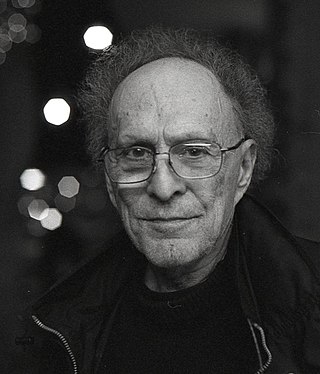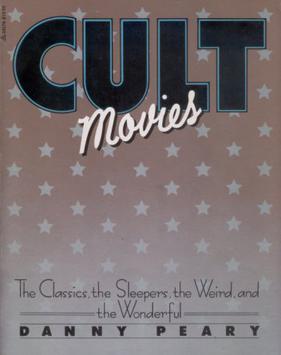
Glen or Glenda is a 1953 American independent exploitation film directed, written by and starring Ed Wood, and featuring Wood's then-girlfriend Dolores Fuller and Bela Lugosi. It was produced by George Weiss who also made the exploitation film Test Tube Babies that same year.

Robert Adolph Wilton Morley CBE was an English actor who enjoyed a lengthy career in both Britain and the United States. He was frequently cast as a pompous English gentleman representing the Establishment, often in supporting roles. In 1939 he received an Academy Award nomination for Best Supporting Actor for his portrayal of King Louis XVI in Marie Antoinette.

Wilfrid Hyde-White was an English actor. Described by Philip French as a "classic British film archetype", Hyde-White often portrayed droll and urbane upper-class characters. He had an extensive stage and screen career in both the United Kingdom and the United States, and portrayed over 160 film and television roles between 1935 and 1987. He was twice nominated for a Tony Award for Best Actor in a Play, in 1957 for The Reluctant Debutante and in 1973 for The Jockey Club Stakes.

Michael Grant was an English classicist, numismatist, and author of numerous books on ancient history. His 1956 translation of Tacitus's Annals of Imperial Rome remains a standard of the work. Having studied and held a number of academic posts in the United Kingdom and the Middle East, he retired early to devote himself fully to writing. He once described himself as "one of the very few freelancers in the field of ancient history: a rare phenomenon". As a populariser, his hallmarks were his prolific output and his unwillingness to oversimplify or talk down to his readership. He published over 70 works.
A semidocumentary is a form of book, film, or television program presenting a fictional story that incorporates many factual details or actual events, or which is presented in a manner similar to a documentary.

Steven Geray was a Hungarian-born American film actor who appeared in over 100 films and dozens of television programs. Geray appeared in numerous famed A-pictures, including Alfred Hitchcock's Spellbound (1945) and To Catch a Thief (1955), Joseph L. Mankiewicz's All About Eve (1950), and Howard Hawks' Gentlemen Prefer Blondes (1953). However, it was in film noir that be became a fixture, being cast in over a dozen pictures in the genre. Among them were The Mask of Dimitrios (1944), Gilda (1946), The Unfaithful (1947), In a Lonely Place (1950), and The House on Telegraph Hill (1951).

Monte Hellman was an American film director, producer, writer, and editor. Hellman began his career as an editor's apprentice at ABC TV, and made his directorial debut with the horror film Beast from Haunted Cave (1959), produced by Gene Corman, Roger Corman's brother.
Harry Whittington was an American mystery novelist and one of the pioneers of the paperback novel. Born in Ocala, Florida, he worked in government jobs before becoming a writer. His reputation as a prolific writer of pulp fiction novels is supported by his writing of 85 novels in a span of twelve years mostly in the crime, suspense, hardboiled, and noir fiction genres. In total, he published over 200 novels. Seven of his writings were produced for the screen, including the television series Lawman (1958-1962). His reputation as 'The King of the Pulps' is shared with author H. Bedford-Jones. Eight of Whittington's hardboiled noir novels were republished by Stark House Press.
Dannis Peary is an American film critic and sports writer. He has written and edited many books on cinema and sports-related topics. Peary is most famous for his book Cult Movies (1980), which spawned two sequels, Cult Movies 2 (1983) and Cult Movies 3 (1988) and are all credited for providing more public interest in the cult movie phenomenon.

Madan Puri was an Indian actor of Hindi and Punjabi films. His brothers were actors Chaman Puri and Amrish Puri. As a character actor mainly in negative roles (villain), he acted in about 430 films in a career spanning above fifty years.
George Duning was an American musician and film composer. He was born in Richmond, Indiana, and educated in Cincinnati, Ohio, at the Cincinnati Conservatory of Music, where his mentor was Mario Castelnuovo-Tedesco.
Gene Fowler Jr., the eldest son of journalist and author Gene Fowler, was a prominent Hollywood film editor. His work included films of Fritz Lang and Samuel Fuller and movies like Stanley Kramer's It's a Mad, Mad, Mad, Mad World (1963), John Cassavetes' A Child Is Waiting (1963) and Hang 'Em High (1968).
TCM Underground was an American weekly late-night cult film showcase airing on Turner Classic Movies. Developed by former TCM marketing director Eric Weber, it was originally hosted by industrial rock/heavy metal musician and independent filmmaker Rob Zombie. The films were programmed by Eric Weber until 2007, when TCM programmer Millie De Chirico took over the role. The block ended on February 24, 2023, following layoffs in December that included De Chirico.
Shashikala Saigal, better known by her first name, was an Indian film and television actress, who played supporting roles in hundreds of Bollywood films beginning in the 1940s.

Ian Marcus Wolfe was an American character actor with around 400 film and television credits. Until 1934, he worked in the theatre. That year, he appeared in his first film role and later television, as a character actor. His career lasted seven decades and included many films and TV series; his last screen credit was in 1990.

Cult Movies is a 1981 book by Danny Peary, consisting of a series of essays regarding what Peary described as the 100 most representative examples of the cult film phenomenon. The films are presented in alphabetical order, with each chapter featuring a story synopsis for the covered title, Peary's response to the film, production and release details, and a brief selection of contemporary critical reviews.

Psychotronic Video was an American film magazine founded by publisher/editor Michael J. Weldon in 1980 in New York City, covering what he dubbed "psychotronic movies", which he defined as "the ones traditionally ignored or ridiculed by mainstream critics at the time of their release: horror, exploitation, action, science fiction, and movies that used to play in drive-ins or inner city grindhouses." It was published through 2006. Most of the magazine's hundreds of reviews were written by Weldon himself. Other contributors provided career histories/interviews with cult filmmakers and actors such as Radley Metzger, Larry Cohen, Jack Hill, William Rotsler, David Carradine, Sid Haig, Karen Black, and Timothy Carey. Regular features included "Record Reviews" by Art Black, "Spare Parts" by Dale Ashmun, and "Never To Be Forgotten", an obituary column.
The following is a list of works by Arthur C. Clarke.

Cult Movies 2 is a 1983 book by Danny Peary, a follow-up to his 1980 book Cult Movies. Just like its predecessor it consists of a series of essays regarding what Peary described as the most representative examples of the cult film phenomenon. This book covered fifty films not among the hundred in the first volume.











